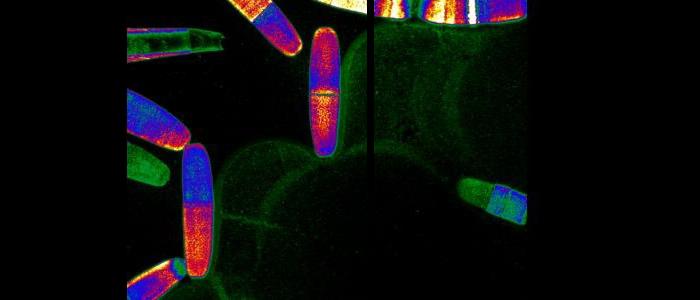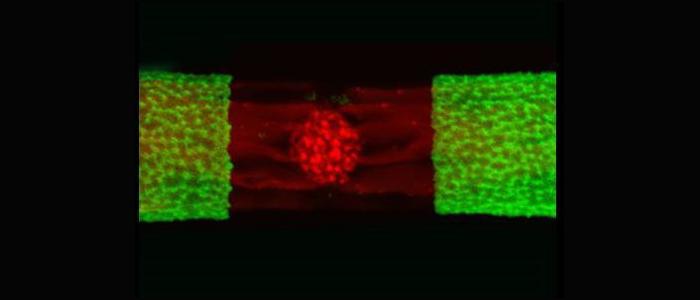Penium: a new unicellular model plant
Approximately 470–500 million years ago, a freshwater green alga emerged onto land and ultimately gave rise to modern-day land plants. This event represents one the most profoundly important keystone events in the natural history of our planet. Plants changed the biogeochemistry of the planet, created conditions for successful terrestrial colonization by taxa of the other kingdoms of life (e.g. animals, fungi) and ultimately changed the course of human evolution. Plants provide humans with food, medicines, clothing, building materials and fuels to support our electricity and transportation needs.
Along with the possession of photosynthetic organelles (e.g. chloroplasts), the most distinguishing feature of a plant cell is the cell wall. The wall is the major cell covering that provides the plant cell with physical protection, expansion control, rigidity, a structural conduit for adsorption and transport of water and minerals and a means for communication with the external biotic and abiotic surroundings. The cell wall consists of various polymers including cellulose, pectins, hemicelluloses, proteins and sometimes phenolics, along with water and various inorganics. Plant cell wall polymers represent some of the most abundant biochemicals produced each year on the planet and are the foundations for agriculture, textiles, building materials and biofuels. Plant cells devote much of the photosynthetic carbon that they make into the production of the cell wall, and it is estimated that between 20% and 30% of the plant’s genome is devoted to the synthesis and maintenance of the cell wall. Furthermore, the cell wall is a “living” cellular component that dynamically modulates during cell expansion, division and development. As one would imagine, the cell wall is a major focal point of study by plant biologists, biochemists and environmental scientists.
Current molecular, biochemical, and cell biology-based studies are revealing much about the cell wall, its components and its development in plants. One of the major practical difficulties with such studies is that it is often difficult to resolve specific structures and events of a single cell that is part of a complex multicellular tissue or organ. However, a unicellular model plant system has emerged for the study of plant cell walls and other areas of plant research, Penium margaritaceum. Penium is a unicellular member of the Charophycean green algae, and recent molecular work has shown that it is one of the closest green algal relatives to land plants. This alga has a cell wall with polymers remarkably similar to land plants and is easily manipulated in laboratory experiments. This website is devoted to research dealing with Penium and is sponsored by a grant from the National Science Foundation (NSF-MCB-RUI-1517345).







